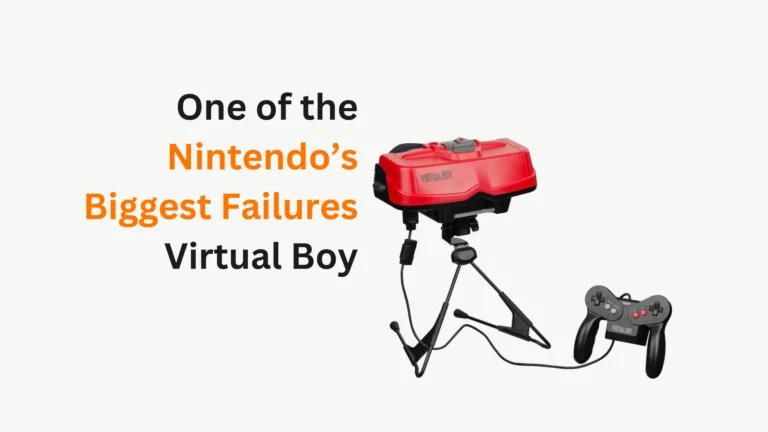The Virtual Boy gaming console still remains the much-talked-about and one of Nintendo’s biggest failures after more than 25 years.
Nintendo, a global Japanese video game corporation headquartered in Kyoto, creates, publishes, and sells video games and video game consoles. Fusajiro Yamauchi, a craftsman, created Nintendo in 1889 as Nintendo Karuta and initially produced handcrafted hanafuda playing cards.
It is well-known for its various achievements in the video gaming industry, such as the older Nintendo 64 and the Nintendo Switch.
But behind each of its best-selling consoles are a few flops. Nintendo has abandoned several failed consoles over the years, and Virtual Boy is one of them.
Related Read: Learn about idea management
Notoriously famous for giving headaches to its users, Virtual Boy was released on July 21, 1995 in Japan and on August 14, 1995 in North America.
The Nintendo Virtual Boy gaming console was a VR-like system with 3D capabilities far ahead of its time. It came with a mounted eyepiece into which a player would glance to view the screen, similar in appearance to today’s VR headsets.
Nintendo positioned Virtual Boy as an original and one-of-a-kind experience, a business innovation.
While it was confirmed in theory, it did not receive the response Nintendo had hoped for.
Why Nintendo Virtual Boy failed?
Gunpei Yokoi, former leader of Nintendo’s internal R&D group, imagined the Virtual Boy as a compact headset that users could put on and play anywhere.
However, Virtual Boy evolved quickly from an idealized pair of lightweight goggles to a hefty headset.
To protect gamers’ brains from EMF radiation, the system had to be weighted down with metal plates. Nintendo created a stand for the Virtual Boy to compensate for the weight. Unfortunately, the system’s final design had a significant flaw: users had to lean forward while playing, which caused neck pain.
Basically, using one of Nintendo’s biggest failures caused literal physical pain.
Related Read: Why did Apple Pippin fail?
Also, the console screen could only display red and black, making things even more difficult. The colors, combined with the 3D effect, caused eye discomfort.
Nintendo had to publish liability warnings that the Virtual Boy could cause headaches, nausea, and seizures. This did not surprise competitor manufacturers because the technology underpinning the Virtual Boy has been demonstrated to several firms, including Sega. Except for Nintendo, every company avoided 3D technology because it caused children to vomit and lose their equilibrium.
Most Nintendo consoles have come with a robust game library. Super Mario Bros. and Duck Hunt were included with the NES. Each game sold well on its native platform. Unfortunately, the Virtual Boy is the single exception.
The Virtual Boy’s game catalog was limited even before the machine was released. Former Nintendo President Hiroshi Yamauchi specifically instructed Yokoi to “de-emphasize Mario” on the Virtual Boy.
To gamers’ disappointment, Virtual Boy only had 22 games under its belt. This is less than the size of many recent console launch libraries. The game failed to attract its customers due to its inability to provide a comfortable gaming experience, leading it to go off the market.
On top of it, the console’s initial price was $179.95 when it was released in 1995. Considering the damage it was causing to children and the inability to provide variety, it is a high price.
Nintendo eventually had to lower it to $99 as sales stagnated. Only 770,000 units were sold, a relatively low quantity compared to the Game Boy, which sold 40 million units.
These flaws ultimately led to the Virtual Boy’s early demise. Virtual Boy was discontinued by Nintendo in 1996 due to a complete lack of interest. Hence, it is still one of the biggest Nintendo’s failures.



